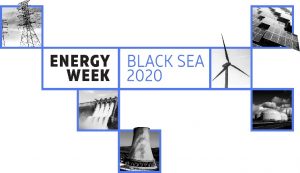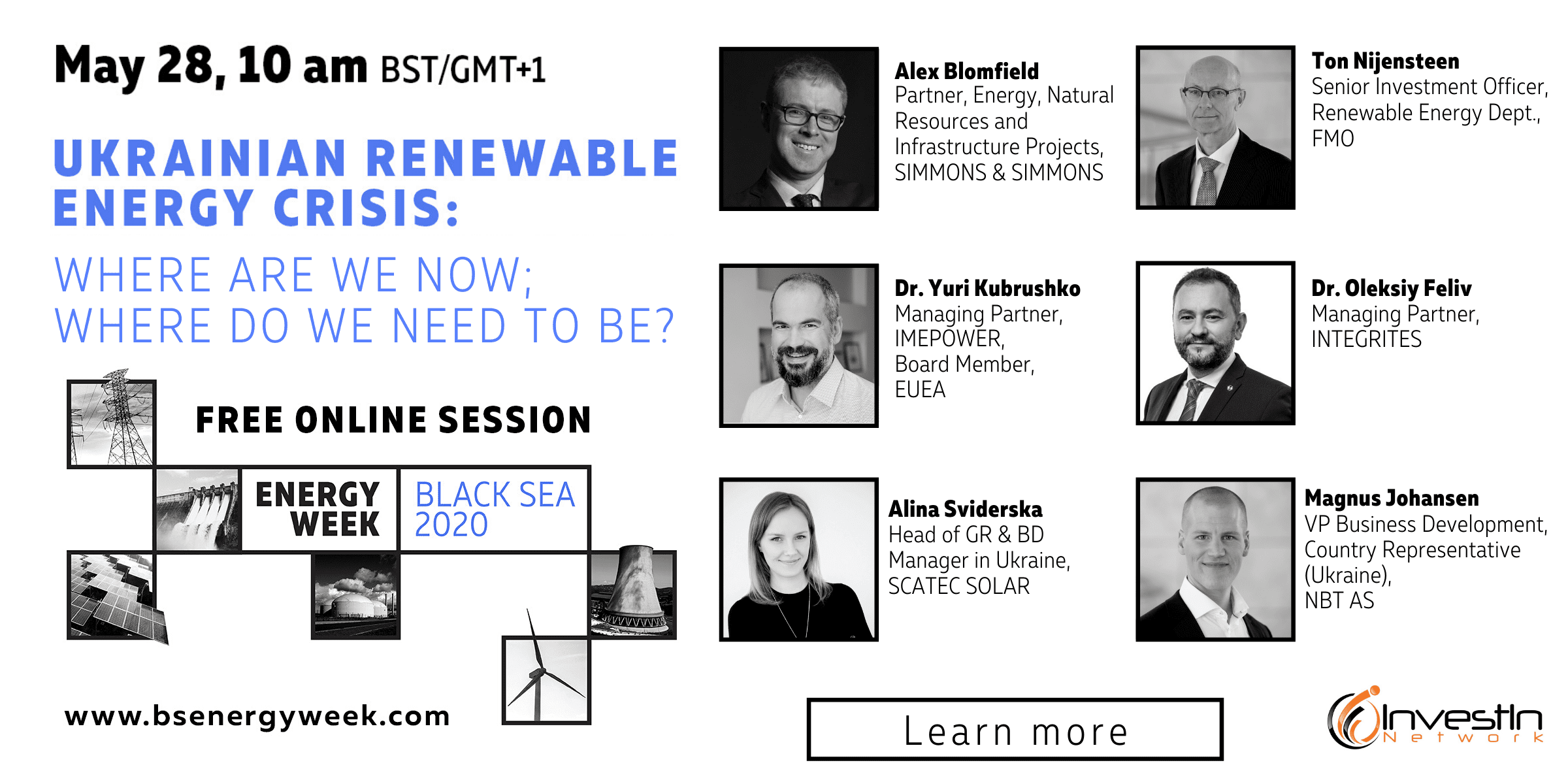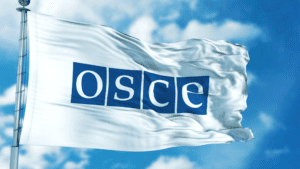
Free Online Session dedicated to the Ukrainian renewable energy crisis will be held on 28th May within the framework of Energy Week Black Sea 2020.
Due to the lucrative feed-in tariffs introduced in 2009, Ukraine has achieved remarkable progress in mobilising sizable private sector investments in the energy sector and becoming one of the fastest–growing renewables markets in Europe. In 2019, renewable energy deployment saw a record growth to 4 250 MW compared to the installed capacity of only 743 MW in 2018.

However, the recent developments, and, in particular, the initiative of the government to cut the feed-in tariff for wind and solar energy producers can change the outlook and turn the Ukrainian renewables success story into an illustration of why the state is not ready for foreign investment.
In December 2019, bill No. 2543 on improving the investment climate in the renewable energy sector was registered in Ukraine’s parliament. The bill proposes a voluntary restructuring of FIT with a simultaneous extension of the terms for their payment and a reduction in the terms of preliminary power purchase agreements (pre-PPA).
The following negotiations which have now lasted for six months failed to produce a compromise solution acceptable to both Ukrainian authorities and domestic and foreign investors. The key issues are still open, namely restructuring of power purchase agreements and feed-in tariffs, the release of capacity for wind energy investors for the benefit of future auctions, balancing responsibility and compensation for curtailments of wind and solar producers.
Online Session “Ukrainian Renewable Energy Crisis: Where Are We Now; Where Do We Need To Be?” is organised to address the situation and discuss the following questions:
What should be the state’s immediate steps in resolving the renewable energy crisis?
What are the most practical solutions and stabilisation measures acceptable for foreign investors?
How will Ukraine continue attracting investors in global competition? Are “green” auctions attractive enough?
What will be the pace of renewable energy project commissioning post-FIT?
What are the possibilities for addressing intermittency and energy security? How does the transition meet the need for continuous supply in the absence of storage? How should energy storage be supported?
Free Registration: https://www.bsenergyweek.com/online-session/
Open4business – media partner of Online Session «Ukrainian renewable energy crisis: Where are we now; where do we need to be?»

The big privatization will be launched as soon as the coronavirus crisis is over, and the Dnipro Hotel will become its pilot project, President of Ukraine Volodymyr Zelensky has said.
“As to medium-sized and big privatization, everything is ready. It will be launched after COVID-19. The first target – the Dnipro Hotel – is ready. As we promised, we started with public administration agency,” he said at a press conference in Kyiv on Wednesday.
The president also said the rest of hotels on balance of the public administration agency will be handed over to the State Property Fund.
The privatization targets have been “cleared off” legal cases, Zelensky said.

The crisis in Ukraine and around Ukraine is the key problem of security on the European continent, OSCE Chairperson-in-Office and Slovakia’s Foreign Minister Miroslav Lajčák said in an interview for the Faces of Peace project.
“The number of casualties we have seen in eastern Ukraine in the past five years is higher than anything we have seen elsewhere in Europe this century,” he said.
Lajčák said the OSCE’s Special Monitoring Mission (SMM), which is made up of more than 1,300 members, has done extremely important work since it was deployed in Ukraine during the spring of 2014.
“Our monitors are in the field observing and reporting on ceasefire violations, monitoring the latest developments and the hardship faced by people,” he said.
Lajčák evaluated the current situation in eastern Ukraine, noting that the ceasefire agreement starting on July 21, 2019, was a positive development leading to a significant decrease in the number of casualties among the civilian population and ceasefire violations.
“Nevertheless, unfortunately recently (As at October 11, 2019) there were days when there were more ceasefire violations than before recommitment,” he said.
Lajčák focused attention on the fact that “positive dynamics between Russia and Ukraine led to the exchange of prisoners” and noted important steps in taken under the aegis of the Trilateral Contact Group on regulating the situation in Donbas, where the sides agreed to the process of withdrawing forces and the so-called Steinmeier Formula. He also noted repair work done to help people crossing the bridge in Stanytsia Luhanska.
Lajčák expressed the hope that there would soon be a summit of Normandy Four leaders (Ukraine, Germany, France and Russia).
“There have been very good discussions within the Normandy Format that will, I hope, lead to a long-awaited Summit of the Normandy Four leaders,” he said.
Slovakia has had the rotating chairmanship of the OSCE since January 1, 2019, when Lajčák became Chairperson-in-Office. Ukrainian Foreign Minister Vadym Prystaiko has invited him to jointly visit Stanytsia Luhanska and inspect infrastructure repairs there.